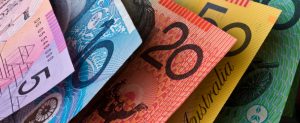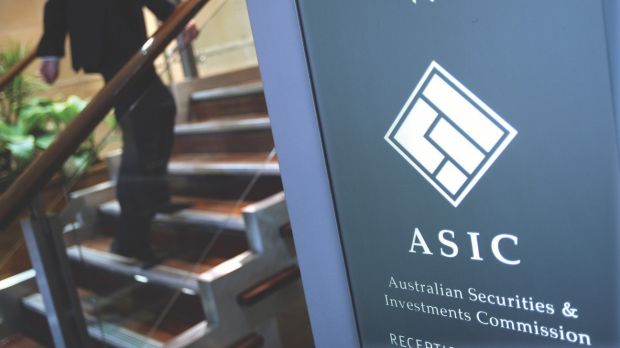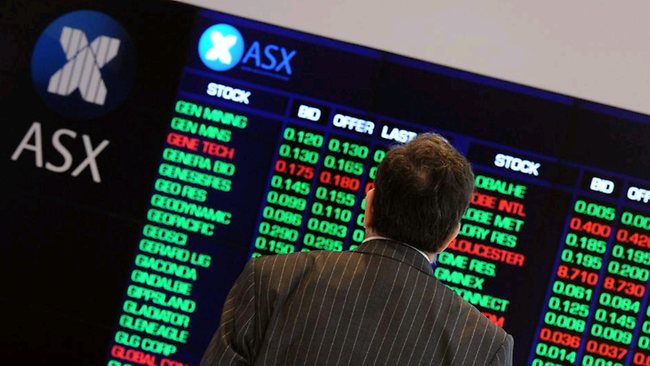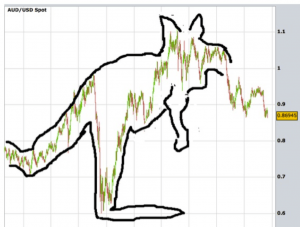Contents
Australia is one of the first countries to start offering FX trading to the retail clients, hence it is also amongst the most advanced countries in this sector. Most of the FX brokers are happy to accept the clients from Australia, yet one should only opt out for a locally regulated company to end up trading with the best Australian Forex broker. The rule of thumb is to make sure that the broker of your choice is regulated by the Australian Securities and Investments Commission, or as it is often abbreviated – the ASIC. Keep in mind that there can be many scams pretending to have the regulation of this financial authority. This is why you should always visit the official ASIC’s website (http://www.asic.gov.au/) and verify that the company is regulated.

It is also quite important to choose a broker that supports deposits and withdrawals in the local currency – the Australian dollar. However, if you are choosing an ASIC regulated FX broker, you are very likely to have AUD trading accounts available. Needless to say, this point is only important for the traders that are located in Australia. In case you reside in New Zealand or one of the South-East Asian countries and are looking for a trusted financial company – you may skip the availability of AUD accounts.
Another reason for choosing an Australian Forex broker is to get the best possible support in your time zone. Most of the FX brokers provide support 24/5, yet a larger share of these brokers are unlikely to offer great support all the time. The best support operators are usually located in the headquarters, and often those are in Europe. So, if you are located in the UTC+10 timezone or somewhere close, Australian Forex brokers can support you in the best possible way.
Currently, there are around 28 brokers that are regulated by the ASIC, yet many of those are having only a small part of their business located in Australia. We have conducted in-depth research to help you navigating amongst the Australian Forex brokers list so you can choose the best possible place for your trading.

$100
CySEC, CBI, ASIC, FSCA, FSA, BVI FSC, ADGM
1:400
2006
MT4, MT5, WebTrader, AvaTradeGo

5$
CySEC, FCA
30$, 50%+20%
1:888
2009
MT4, WebTrader

$10
IFSC
1:2000
2009
MT4, MT5, R WebTrader, R MobileTrader, R Trader

$10
FCA, CySEC, FSA, FSCA
1:Unlimited
2008
MT4, MT5, WebTerminal

$10
CySEC
N/A
1:30
2013
WebTrader

10 USD
N/A
Affiliate Program
1:500
2019
MT4/WebTrader

250$
FCA, NFA
N/A
1:200
1999
MT4

0.01 BTC
N/A
N/A
1:1000
2018
Web trader, Android, and iOS apps

1 USD
ASIC, FCA
10 USD
1:500
2005
MT4, MT5, WebTrader

250 USD
FSCA
N/A
1:200
2012
MT4, WebTrader, Copykat

15
CySEC
30%
1:500
2015
MT4

250 EUR
FSA, Seychelles
None
1:200
Unknown
Custom
CFDs are complex instruments and come with a high risk of losing money rapidly due to leverage. Between 74-89% of retail investor accounts lose money when trading CFDs. You should consider whether you understand how CFDs work and whether you can afford to take the high risk of losing your money.
Simply hit a button to land on the broker’s website and preview its services. Alternatively, you can read the reviews and find more details without leaving our site. For your convenience and safety, we have reviewed Australian Forex scams and companies that provide unfavorable conditions. You may read their reviews, but we have removed all of the sign-up links that led to these brokers’ websites.

As it was already mentioned, opting out for the brokerage company that is regulated by the Australian Securities and Investments Commission is the wisest choice a trader from Australia or South-East Asia can make. Now let’s see what ASIC is all about.
ASIC is the independent Australian governmental body that is responsible for overseeing the following areas:
ASIC was established in 1998 and it has replaced the previous regulatory body known as Australian Securities Commission aka ASC. The later had been regulating most of the Australian financial products and services from 1991, and before this year, the financial regulation in Australia has been undertaken on the regional level. Since the year of 1998, it was possible for the FX brokers to get local licenses and finally become Australian regulated Forex brokers.
Next, to the brokerages, ASIC also regulated all of the insurance companies, investment funds, and even the banks. This allows ASIC to perform a full overview of the financial market and liaises with the vast majority of the market players.
Considering its age and the scope of overseeing activities, ASIC is considered to be one of the world’s most trusted financial regulators.
The first thing that is needed from a broker to apply for the Australian Forex License is the locally incorporated company for the purpose of the Foreign Exchange operations. Hence, the only way of becoming the best Australian Forex broker is by fully committing to establish the operations in this country.
One important thing to keep in mind is that only Australian registered companies may apply for a .com.au domain. However, not every registered company is a regulated one. Hence, you should always verify that the company is regulated by the ASIC and that its license number from the website corresponds to the ASIC’s financial register.
To start-up an FX brokerage regulated in Australia, the company should have a physical presence and submit the application form. Most likely, top Australian Forex brokers will have to appoint a local director as well.
After obtaining local representatives and the official address, ASIC sets a capital requirement for any company that wants to be locally regulated. For years, the company had to lock 50,000 AUD of its capital to serve as a licensed FX brokerage. However, now this limit is only applicable for the brokers that operate solely under Straight-through-processing (STP) business model. In case a broker wants to be a market maker (e.g. take the opposite side of the trade), a capital of 1,000,000 AUD is required. Before early 2013, the capital requirement for offering market making services has been capped at 500,000 AUD. Such a high capital requirement has been keeping the Australian retail FX sector rather safe as setting up an ASIC regulated FX broker and running away with clients money can hardly be possible when scammers have to put upfront over one million of assets.
Besides that, right after the notorious SNB’s decision that led to many FX brokers going bankrupt, ASIC has announced that it will be enhancing its screening procedures for authorized FX brokers even more. While there have not been much disclosed, it is believed that the new Australian Forex brokers have to either be only based in Australia or have a solid license (like FCA) for a number of years. Nevertheless, during the last few years, ASIC has stopped approving the vast majority of the applications for the Australian Financial Licenses that were coming from the firms that were offering marginal trading – the Forex brokers. In the meantime, such licenses have been processed and granted for the companies from the different segments, e.g. the lending companies.
Unlike the brokers that are governed by the European Banking Authority (e.g. CySEC or FCA brokers), FX brokers from Australia do not have to share the same rights and restrictions. This is why Australian Forex brokers are still able to provide all sorts of trading benefits that include Forex contests, deposit bonuses, no deposit accounts, refer-a-friend promotions, and other deals.
In addition to this, the maximum leverage that a trader can get from an Australian broker is capped at 500:1. Unlike the FCA and CySEC, the broker is not required to make sure that default leverage is set below 50:1.
Forex brokers in Australia are required to clearly disclose the nature of their operations and the risks involved in the financial trading.
FX brokers provide access to a few types of the markets. Obviously, these brokers enable the trading of various currency pairs. Along with that, the brokers provide the trading of the Contracts-For-Difference aka CFD, and this might be banned soon by the ASIC. The first announcements have been seen in 2016, yet there has been no action taken until now. Considering the current popularity of the bitcoin trading, the prohibition of the CFD trading might have a negative impact on the Australian cryptocurrency brokers and their offers, as most of them operate using CFDs.

As previously noted, it is still possible for an Australian broker to offer CFD trading. Considering that Australia is having a large and an active stock exchange, CFD trading is also quite popular. Most of the CFDs are traded for the Australian Securities Exchange (ASX) listed companies. It is also possible to trade ASX 200, an index of the largest listed companies. However, these types of trading may only be available to the largest Forex brokers in Australia.

One of the reasons why FX trading has been so popular in Australia is because the country’s national currency, the Australian dollar, is one of the most traded currencies in the world. It is directly quoted against the USD dollar, and AUD/USD currency pair even has its own nickname – the Aussie. The typical spread for this currency pair ranges between 0.4 and 2.6 pips on the accounts that do not include the commission. Hence, it makes Aussie one of the most expensive currency pairs to trade from the major ones.
Scammers have been attacking the Australian traders often, and this is why it is always recommended to check the Australian Forex broker reviews before depositing or even signing up with a shady company. Various unregulated FX and binary brokers have been reaching out to Australian traders and investors, and the months of August and September of 2017 have seen the record amount taken from the traders. It is believed that around 30 million USD has been stolen by the Australians only during these two months.
Nowadays, FX and binary scammers still exist, but most of them have switched to cryptocurrency offers.
Get the most recent news at your inbox
Stay up to date with the financial markets everywhere you go. We won’t spam you.
